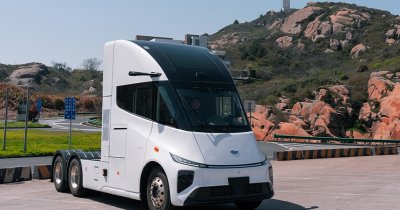According to Green Car Reports, at slower speeds, the vehicle might actually be able to juice up its battery pack, even if slowly.
Testing has been so far conducted on a special track in Chiari, Italy, where dynamic wireless power transfer for EVs has been recently demonstrated.
One of the EVs tested at the facility was the Fiat New 500, which is an electric car exclusively made for the European market and an evolution from the Fiat 500e.
The wireless EV charging technology for the Fiat New 500 has been provided by Israeli wireless charging startup Electreon, and the same company managed to electrify a Swedish public road of around 1.6 kilometers.
US state Michigan also plans to implement the company's wireless charging technology for EVs in Detroit in a pilot project.
Stellantis also presented a Maserati Grecale Folgore, which will be outfitted with wireless charging for testing. The Grecale Folgore is the first full EV from the Italian performance company, which announced the electrification of all its vehicles within the lineup by 2030.

Photo source: Stellantis
The facility in Chiari was built by A35 Brebimi and configured by multiple partners, including ABB, Mapei and Iveco.
They decided to implement DC charging instead of AC charging in order to reduce the waste of power and the system allows for the implementation of renewable sources and even the installation of thinner cables.
The testing facility makes use of aluminum cables instead of copper ones, since they cost half as much, as lighter and easier to recycle.
While no power level was confirmed for the dynamic wireless charging test, Electreon's system makes use of 20kW modules, with multiple units being needed in order to power something like a truck and a single one being usable for a normal car.
Implementing dynamic wireless charging systems is a complicated and expensive process, which requires at least the partial removal of the pavement.
The Stellantis facility can be used to test both dynamic and static wireless charging systems for EVs, with the latter version being easier to implement at first, since it is less complicated and can be used in places like parking spots, garages and even at stop lights.
 Mihai - Cristian Ioniță
Mihai - Cristian Ioniță












Any thoughts?